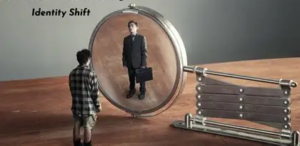Read time 5 minutes
In a life filled with challenges, gratitude becomes a daily practice. I often find myself saying, “Thank you, dear Universe, for blessing me with the strength to heal.”
Recovery isn’t just physical, it’s emotional, spiritual, and deeply personal.

This blog is a reflection of my battle with rare diseases. It states how something as simple as a foam roller became an unexpected ally in my path to healing.
My Life Before Diagnosis: When Activity Was Joy
Before life took a sharp turn, my days were bursting with vitality. I thrived on long road trips, spirited table tennis matches, and calming beachside walks.
Movements felt effortless. My body cooperated, my spirit soared, and I embraced every moment with delight.
Little did I know, the ordinary was about to evolve into something extraordinary, and not in the way one hopes for.
My Rare Disease Diagnosis Changed Everything
It was 2016 when I first encountered Isaacs’ Syndrome. It is a rare neuromuscular disorder that causes continuous muscle fiber activity. With it came an entourage of conditions: Lyme disease, Glaucoma, and Membranous Glomerulonephritis. Each diagnosis felt like a new piece of a puzzle I never asked to solve.
Lyme disease, contracted through tick bites, infiltrated my nervous system. Glaucoma threatened my eyesight by damaging the optic nerve. My kidneys weakened under the impact of Membranous Glomerulonephritis. And my digestion was often disrupted by Irritable Bowel Syndrome (IBS), Diabetes, Frozen Shoulder, Eczema and Blood Pressure issues.
Pain became my new companion, gnawing, persistent, and unpredictable. I experienced muscle cramps, fasciculations (involuntary twitches), and tightness so intense it felt like my own body was working against me.
Each breath came with a weight, and my immune system struggled to keep up. In many ways, I had to relearn life.
Grieving My Old Self: The Identity Shift

One of the hardest realizations was that grief isn’t exclusive to death. You mourn the loss of the person you used to be, the energy, the spontaneity, and the freedom. I wore the badge of ‘chronically ill’ with pride and pain. Getting diagnosed brought clarity, but it also dismantled my previous identity.
In conversations with my doctors, I learned that my muscles were degenerating. My illnesses were affecting my connective tissues, leading to a steep decline in strength and mobility. This knowledge didn’t just alter my physical routines; it changed how I saw myself and the world around me.
Discovering Foam Rolling: A Game-Changer in Pain Management

Amidst the treatments and therapies, one unexpected tool transformed my self-care routine. It was the foam roller. Introduced to me by my Iyengar Yoga mentor, it was a lightweight cylindrical device designed to ease muscle tension and promote healing. At first glance, it seemed unimpressive. But its effects were profound.
I started using a dense, smooth roller, gentle yet effective. It became my go-to for tackling muscle knots, stiffness, and soreness, particularly after yoga or during flare-ups. What felt ‘simple’ at first soon proved to be a valuable therapeutic tool.
What Is a Foam Roller? Understanding Its Benefits
Foam rollers are self-massage devices shaped like cylinders. They target muscle tightness, reduce inflammation, and calm the nervous system. By applying pressure to specific muscle groups, they encourage blood flow, improve flexibility, and relieve pain.
Many athletes and fitness enthusiasts use foam rollers during warm-ups or cool-downs. For me, it became an everyday aid in easing discomfort and regaining mobility.
Foam Roller Benefits for Chronic Illness and Muscle Recovery
- Improves blood circulation and muscle oxygenation
- Reduces muscle soreness and post-exercise fatigue
- Enhances flexibility and range of motion
- Breaks up fascia adhesions and tight knots
- Supports neuromuscular function and mobility
- Promotes lymphatic drainage for detoxification
Safety First: Is Foam Rolling Right for Everyone?

Foam rolling is generally safe, but it’s not for every situation. Avoid it if you have:
- A fresh injury or muscle tear
- Severe joint instability
- Osteoporosis or fragile bones
Always consult a healthcare professional before starting a new routine. It is important especially if there is a complex medical history. While foam rollers can work wonders, improper use may aggravate symptoms.
How I Use My Foam Roller: A Gentle Guide

Using a foam roller became a ritual—a moment of healing and mindfulness. Here’s how I adapted it for my chronic conditions:
Foam Rolling Tips
- Start Light: Begin with gentle pressure, especially if you’re new to it or experiencing muscle weakness.
- Avoid Joints: Roll over muscle tissue, not bones or joints like knees or elbows.
- Focus on Breath: Breathing deeply helps your body relax and respond better.
- Consistency Is Key: Daily sessions, even short ones, offer cumulative relief.
- Use Before and After Yoga: It complements stretching and enhances recovery.
The roller became part of my physical therapy, an instrument through which I soothed spasms, reduced inflammation, and found short bursts of peace.
Personal Results: How Foam Rolling Helped Me
The benefits extended beyond physical relief. It improved my mental state, too—less stress, more clarity. Here’s what I noticed:
- Muscle pain decreased, especially in my thighs and back
- My posture improved as tension released
- I felt more mobile and flexible during yoga and daily tasks
- Breathing became easier, aiding in managing stress
- I experienced better sleep, thanks to reduced pain
- Energy levels improved, allowing me to participate more actively in life
This lightweight tool gave me a sense of control over my symptoms. It wasn’t a miracle cure, but it was a meaningful part of my recovery arsenal.
Why You Should Consider Foam Rolling
If you’re dealing with:
- Chronic pain
- Muscle stiffness
- Neurological discomfort
- Post-workout soreness
- Limited flexibility or range of motion
…a foam roller might be worth exploring.
Hygiene and Caution: Don’t Share Your Roller

Let’s talk about hygiene. Foam rollers collect sweat, bacteria, and dust; especially when used on a mat or floor. Sharing your roller isn’t recommended. Even if you’re the only user, regular cleaning with disinfectant is essential.
It’s a minor detail but makes a big difference when you’re immunocompromised or have sensitive skin conditions like eczema.
Conclusion: Small Tools, Big Impact
There’s something poetic about finding relief in the simplest of things. My foam roller didn’t just soothe my pain; it reminded me of the power of small steps. With rare diseases constantly challenging my strength, this inexpensive, accessible tool became a lifeline.
I still have days when the pain overshadows everything. But foam rolling brings moments of ease. It helps me move more freely, rest more deeply, and live more consciously.
While research continues to unlock more about its therapeutic potential, I stand by my personal experience. Foam rolling works.
It empowers, supports, and heals in its own subtle way.
DISCLAIMER
This article reflects my personal experience and is not a substitute for professional medical advice. Always consult a healthcare provider before beginning new therapies.


